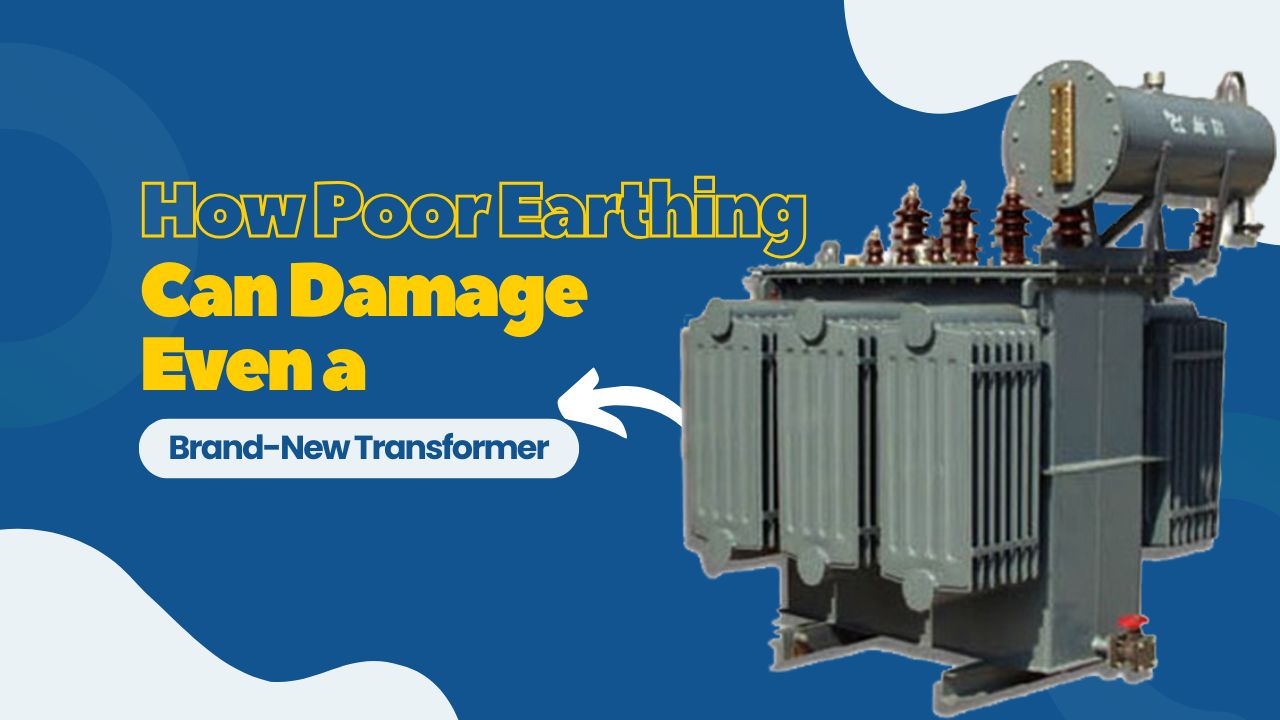

You expect a new transformer to perform flawlessly. When it trips, hums oddly, or overheats in its first months, frustration sets in fast.
Most teams look at oil quality, cooling, or load as the cause. But the real problem often sits quietly underground—the earthing system.
Faulty grounding doesn’t just reduce safety; it silently degrades insulation life, increases voltage stress, and accelerates failure in even the best-built machines.
Here’s how poor earthing quietly turns a strong start into an early breakdown.
Earthing keeps the system voltage stable by giving stray currents a safe exit. When grounding resistance climbs too high, that path weakens.
The excess energy doesn’t vanish; it redistributes across the transformer’s core, windings, and bushings. This shifts the electrical balance inside the unit.
Windings closer to the tank begin facing higher voltage gradients, especially during transients or switching surges.
Over time, the dielectric system faces uneven strain. Paper insulation starts carbonizing near points of high stress. Oil oxidizes faster. These small degradations rarely trigger alarms immediately, but shorten insulation life significantly.
Surge arresters depend on low-resistance earth paths to drain spikes safely. When grounding resistance is poor, fault or lightning energy doesn’t leave the system fast enough.
Instead, it lingers and arcs internally through the weakest dielectric layer.
Even a single strike can distort winding geometry, crack insulation barriers, or puncture oil layers. If the event repeats, those micro-faults grow until the transformer trips or burns out.
We’ve seen brand-new units suffer irreversible core displacement after a single event. All because the earthing grid was undersized or poorly maintained.
For star-connected windings, grounding fixes the neutral potential.
Without a solid ground, the neutral floats. That drift shows up as voltage imbalance on the secondary side.
Loads start drawing unequal current, causing overheating in cables and motors. Relays misfire. Protective schemes react late or fail altogether.
Neutral instability also increases harmonic distortion across the system. These harmonics heat up copper conductors and amplify vibration, further weakening the transformer mechanically. Leading transformers manufacturers emphasize proper earthing practices to prevent such failures.
What begins as an earthing lapse ends up creating ripple failures across your entire distribution setup.
Certain patterns appear repeatedly in post-failure investigations. You’ll often find at least one of these issues in the mix:
Each of these raises ground potential differences that distort the voltage reference and force fault current through unintended metal paths.
Earthing systems degrade quietly, often over years. Without proper testing, resistance values climb unnoticed.
Routine checks using fall-of-potential or clamp-type ground testers give early warning of deterioration, but few teams track those readings over time.
A single “pass” certificate isn’t enough; trending data is what reveals creeping risk.
Many facilities now integrate earthing resistance sensors into transformer SCADA or protection relays. These readings show how soil moisture, temperature, and corrosion affect the earth grid dynamically, turning a passive system into a monitored one.
We’ve seen even high-quality transformers lose years of life to poor grounding design. The problem rarely starts with the unit; it starts with the soil it stands on.
That’s why, in our projects, earthing integrity is treated as a design parameter, not an accessory.
Our engineers test and verify ground systems as part of every new build, retrofit, and refurbishment.
When the current finds its way safely to the earth, the transformer can focus on what it was built to do, which is to carry the load, steadily and safely.
To learn more, get in touch with us today.